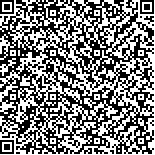| 引用本文: | 赵咏旺,刘毅慧,黄伟.基于近邻成分分析算法的原发性肝癌精确放疗后HBV再激活分类预测[J].生物信息学,2018,16(3):163-169. |
| ZHAO Yongwang,LIU Yihui,HUANG Wei.Classification and prediction of HBV reactivation after radiotherapy of primary liver cancer based on neighborhood component analysis[J].Chinese Journal of Bioinformatics,2018,16(3):163-169. |
|
| 摘要: |
| 原发性肝癌(PLC)患者在精确放疗后乙型肝炎病毒(HBV)再激活是一种常见并发症,及时的预测防护能降低发病率、死亡率。研究表明:多余的特征变量会影响HBV再激活的预测精度。通过提出基于近邻成分分析(NCA)的特征选择方法找出HBV再激活的危险因素及特征组合。之后分别建立经Bayes优化前后的支持向量机模型(SVM)对这些关键特征子集及初始特征集进行分类预测。实验结果表:明HBV DNA水平、KPS评分、分割方式、外放边界、V25、肿瘤分期TNM、Child-Pugh等都是影响HBV再激活的危险因素。其中经NCA特征选择之后发现的V25是在乙型肝炎病毒再激活研究中首次提出的危险因素。10折交叉验证下特征组合HBV DNA水平、外放边界、V25的预测精度高达86.11%。支持向量机分类器可以很好的应用于乙型肝炎病毒再激活的研究,特征选择后的关键特征组合具有更优越的分类性能。 |
| 关键词: 乙型肝炎病毒(HBV) 近邻成分分析(NCA) 特征选择 支持向量机 |
| DOI:10.12113/j.issn.1672-5565.201711002 |
| 分类号:TP391 |
| 文献标识码:A |
| 基金项目:国家自然科学基金项目(No.81402538); 国家自然科学基金项目(No.61375013); 山东省自然科学基金项目(No.ZR2013FM020). |
|
| Classification and prediction of HBV reactivation after radiotherapy of primary liver cancer based on neighborhood component analysis |
|
ZHAO Yongwang 1, LIU Yihui 1, HUANG Wei 2
|
|
(1.School of Information, Qilu University of Technology, Jinan 250353,China;2.Department of Radiation Oncology, Shandong Cancer Hospital, Jinan 250117, China)
|
| Abstract: |
| Hepatitis B virus (HBV) reactivation is a common complication in patients with primary liver cancer (PLC) after precise radiotherapy. Predictive protection can reduce morbidity and mortality. In this paper, we first found the risk factors and characteristics of HBV reactivation by a new feature selection method based on neighborhood composition analysis. Then the support vector machine classifier (SVM) was established before and after Bayes optimization. Finally, these key feature subsets and initial feature sets were classified and predicted. The results showed that HBV DNA level, KPS score, segmentation, extroversion border, V25, tumor staging TNM, and,Child-Pugh, etc. are the risk factors of HBV reactivation. V25 found in this paper after NCA feature selection was the risk factor firstly proposed in the study of HBV reactivation. The prediction accuracy of the characteristics of the combination of HBV DNA levels, extroverted border, and V25 under 10 fold cross validation were up to 86.11%. Support vector machine classifier can be applied to the study of HBV reactivation, and the key feature combination after feature selection has better classification performance. |
| Key words: Hepatitis B virus (HBV) Neighborhood component analysis (NCA) Feature selection Support vector machine |






